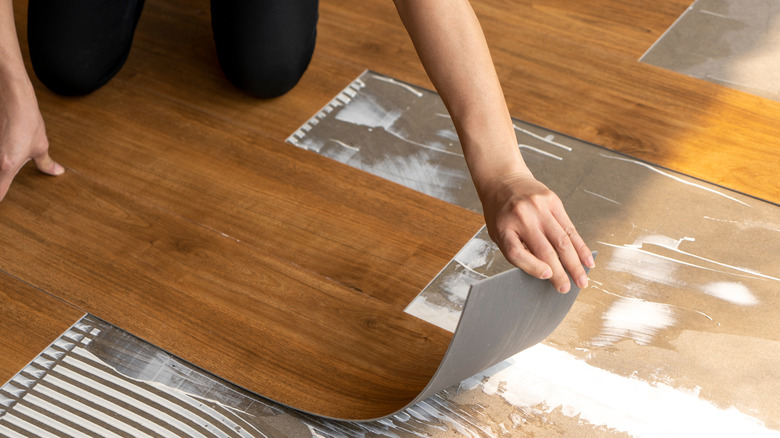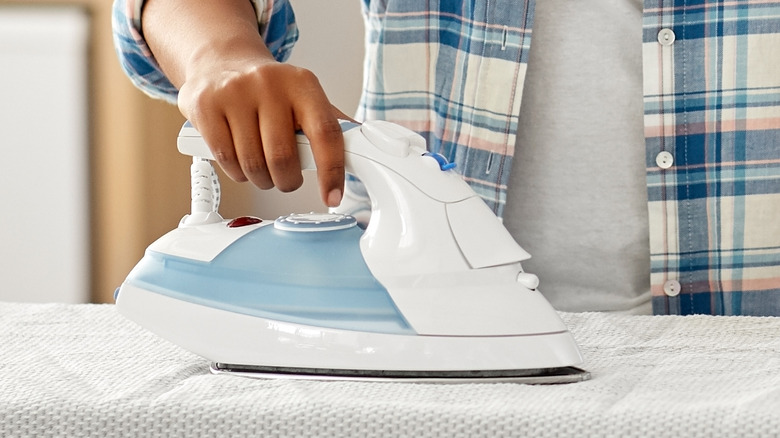How Your Iron Can Actually Fix Your Vinyl Flooring
If you've opted for vinyl floors in your home, you've made a good choice. Vinyl flooring comes in a wide range of patterns designed to imitate other types of construction materials, including wood, stone, and ceramic. The benefits of using vinyl flooring are numerous and include cost savings, durability, and ease to clean, as per This Old House. This type of flooring is also easy to install as it typically comes in sheets or tiles covered with a specific adhesive. It can be used in any room in the house, allowing homeowners to cut down on construction costs when remodeling or building the space of their dreams.
But you should also be aware of the potential downsides of installing vinyl floors in your house, which can range from being hard to remove to being challenging to repair, reports City Floor Supply. However, suppose you notice damage to your vinyl flooring, such as curling, peeling, splitting, or bubbling. In that case, there are ways you can fix the material yourself and avoid having to deal with the high costs of calling in a professional. There is one household item you likely already have on hand that will work wonders to repair minor defects in your vinyl without any extra costs and with minimal interruption to your day. Just head to your laundry room, grab your clothes iron and take a look at the following tips for making your floors look as good as new.
An iron softens the damaged vinyl
A household iron, normally used to take the wrinkles out of clothes and linens, is the perfect item to use if you notice damage to your vinyl flooring. Dengarden explains how to use an iron to repair your flooring depending on the type of damage. If you see a split in the surface of your vinyl flooring, you'll want to go over the split halves with a hot iron, making sure to place a cloth between the floor and the iron itself to avoid scorch marks. After a few seconds, you can remove the iron and take advantage of the now-malleable vinyl to pull the split halves back towards one another. You may need to add some glue to ensure that when the vinyl cools, the halves stay joined together.
SF Gate points out another common issue with vinyl flooring that can be resolved with an iron: bubbling. To get rid of small bubbles on your flooring, first, drive a hole into each bubble with a knife or other sharp object. Next, pass your iron over the top of the bubbled parts, making sure to use a protective layer underneath the iron to prevent the vinyl from melting. For larger bubbles, warm the surface with the iron and then cut an "X" into each bubble. Next, press the cut vinyl against the floor underneath. If the pieces don't stick on their own, a dab of glue should do the trick.

